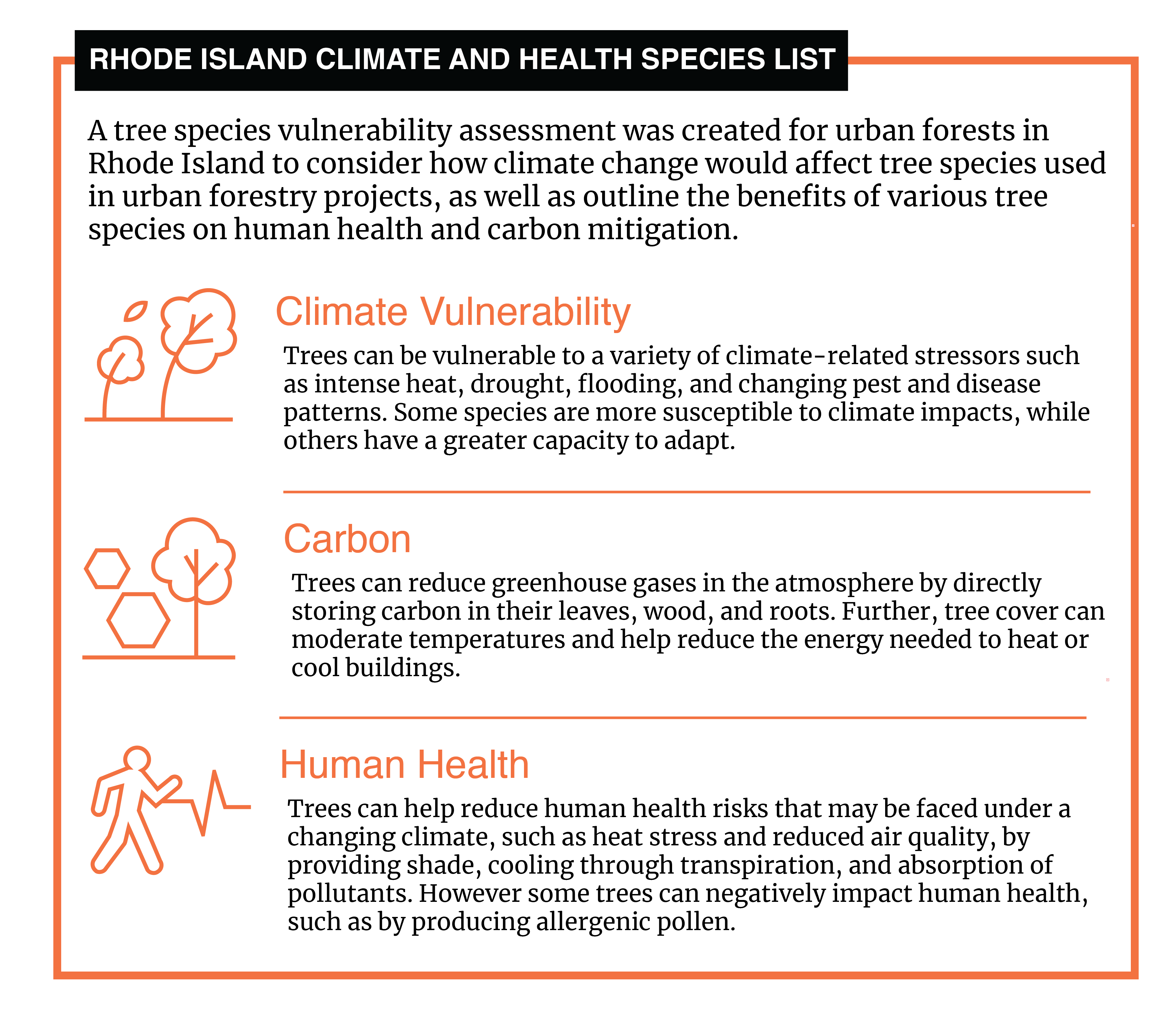Climate change will affect urban forests and the communities that depend upon them in many different ways based on the local characteristics that are unique to each place. For this reason, it is important to think about how the anticipated impacts from climate change are likely to affect your project area.
What climate change impacts and vulnerabilities are most important in your project area?
Many states and metropolitan areas have developed climate change assessments that describe the anticipated impacts from climate change for a particular region. These, along with the National Climate Assessment developed for the United States, serve as a starting point for evaluating which climate risks are most important to your locality. It is good to evaluate vulnerability at multiple scale to understand the relationships among the broad forces that are at play across a large region and the site-level influences that are idiosyncratic to a particular location or project site.
Some cities, such as Chicago and Austin, have created urban forest vulnerability assessments, which evaluate climate change risks on urban tree species by looking at the results from habitat suitability models, projected changes in heat and hardiness zones, and the adaptive capacity of the species in question. These assessments also synthesize hundreds of scientific papers, summarize case studies of community-level vulnerability assessments, and incorporate forest manager expertise to assess the effects of climate change on urban forests.
Assessing Tree Species Vulnerability
Because individual tree species will respond differently to climate change, assessing the vulnerability of individual tree species can provide useful information to urban foresters and municipalities in managing the urban forest. Gathering information on the biological traits of tree species and their sensitivity to varying stressors helps to identify which species may be at greatest risk, as well as locations or neighborhoods that are susceptible to greater loss of forest canopy.
Case Study: Rhode Island Climate and Health Tree List
A tree species vulnerability assessment was created for urban forests in Rhode Island to consider how climate change would affect tree species used in urban forestry projects, as well as outline the benefits of various tree species on human health and carbon mitigation.
View the tree species list for climate and health.
 Do It Yourself!
Do It Yourself!
For areas that do not have a tree species vulnerability assessment, the process to assess tree species vulnerability is:
1. Identify species to assess. You may need to compile a list of native tree species and cultivated street tree species and varieties if one does not already exist.
2. Use a tree habitat suitability model to assess climate impacts. The Climate Change Atlas provides data on projected changes in tree species habitats for more than 130 native tree species in the eastern U.S.
3. For species not modeled, assess climate impacts based on hardiness zones. You can look at the current heat and hardiness zone tolerance of any tree species of interest and then use this tool to evaluate how heat and hardiness zones are projected to change by the end of the 21st century.
4. Assess the adaptive capacity of trees to climate stressors. For example, the tree species list developed for Rhode Island provides an example of how this information was gathered from the Climate Change Atlas, the iTree Species Selector, and other sources.
5. Assess vulnerability. Use the combined information above to evaluate overall vulnerability to climate change.
6. Include other co-benefits as desired. The tree species assessment can also factor in additional information about benefits (or disservices) for human health, carbon mitigation, or other topics of interest. The i-Tree Species Selector provides details on potential environmental services for tree species in a particular geographic area.

